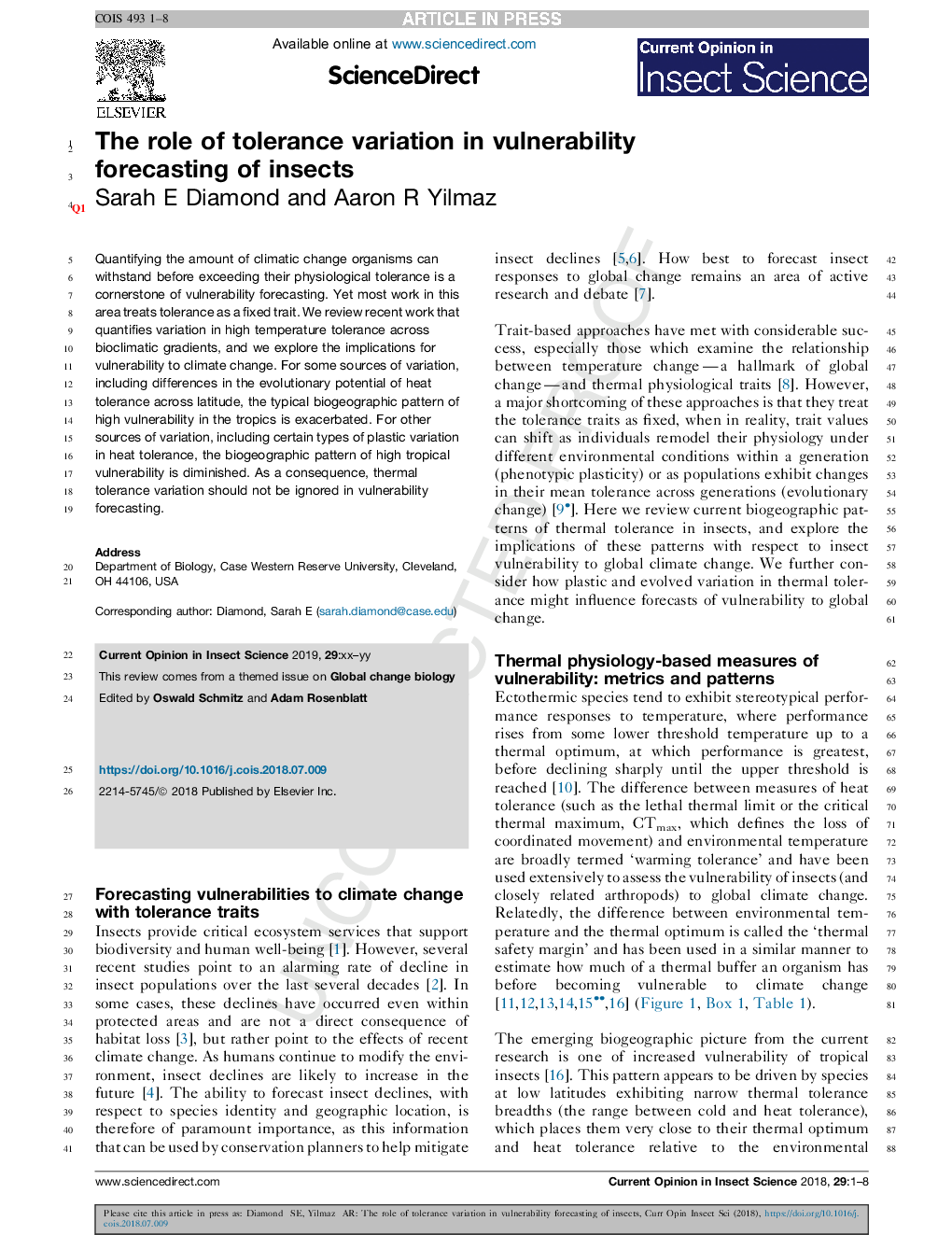| Article ID | Journal | Published Year | Pages | File Type |
|---|---|---|---|---|
| 8878403 | Current Opinion in Insect Science | 2018 | 8 Pages |
Abstract
Quantifying the amount of climatic change organisms can withstand before exceeding their physiological tolerance is a cornerstone of vulnerability forecasting. Yet most work in this area treats tolerance as a fixed trait. We review recent work that quantifies variation in high temperature tolerance across bioclimatic gradients, and we explore the implications for vulnerability to climate change. For some sources of variation, including differences in the evolutionary potential of heat tolerance across latitude, the typical biogeographic pattern of high vulnerability in the tropics is exacerbated. For other sources of variation, including certain types of plastic variation in heat tolerance, the biogeographic pattern of high tropical vulnerability is diminished. As a consequence, thermal tolerance variation should not be ignored in vulnerability forecasting.
Related Topics
Life Sciences
Agricultural and Biological Sciences
Agronomy and Crop Science
Authors
Sarah E Diamond, Aaron R Yilmaz,
